-

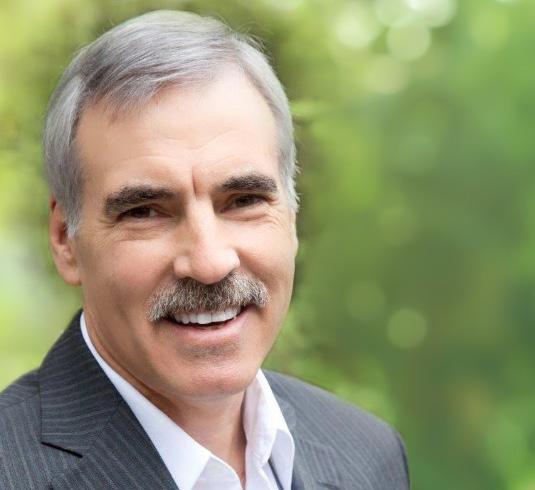 Keis,
Keis,
1308 17 24 Leaders: Stop Hiding Your Emotions - Carolyn Stern, EI Experience How Emotionally Intelligent Is Your Team? - Anja Van Beek, Anja van Beek Consulting & Coaching The Future Of Work Requires Compromise - Pam Nemec, Pam Nemec Consulting, Inc. OCTOBER 2022 • Vol. 27 • No. 10 (ISSN 2564-1948) We Are Forever Confronted With Time Thieves - Jim Stovall, Narrative Television Network CAN YOU LET GO?
Ken
Ph.D., President and CEO, Consulting Resource Group International, Inc.
Fostering Psychological Safety Amidst Industry-Wide Layoffs

First-time
Quiet Quitting: A Wake-Up Call For Better Management

How to
and
The Purpose Of Purpose
routines
Can You Let Go?
Don’t let situations or people hook you or drag you down
- Ken Keis, Ph.D., President and CEO, Consulting Resource Group International, Inc.
26 How to Create A Psychological Safety Zone
= psychological safety + trust
E Miller, Grab and
Stress
How Leaders Can Face Their Fears To Drive Organizational Success
We can’t allow fears of the unknown to drive
teams - Dr. Jonathan H. Westover,
and Associate Professor, Organizational Leadership,
Articles 11
founder navigates recession and builds transparent culture - Ahva Sadeghi, Entrepreneur and Co-founder, Symba 15
recognize
combat quiet quitting - Sathya Smith, Founder and CEO, Piper 19
Are your
leading you to greater happiness, success, contentment and results? - Tim Connor, President, Connor Resource Group
Engagement
- Lauren
Go
Solutions, LLC 28
us or our
Chair
Woodbury School of Business, UVU
06 On the Cover INDEX Personal Excellence OCTOBER 2022 Vol.27 No.10 (ISSN 2564-1948)
Leaders: Stop Hiding Your Emotions
We are complicated, and it is time to stop pretending we’re not - Carolyn Stern, President and CEO, EI Experience
Top Picks 08 13
We Are Forever Confronted With Time Thieves
Set your goals, control your activities, and time will reward you - Jim Stovall, President, Narrative Television Network
INDEX
17 24How Emotionally Intelligent Is Your Team?

6 tips to responding to a heated argument - Anja van Beek, Anja van Beek Consulting & Coaching
The Future Of Work Requires Compromise

It’s time to meet in the middle - Pam Nemec, Pam Nemec Consulting, Inc.


Editorial Purpose
Excellence
Personal Excellence Team
Submissions
Personal
EDITOR’S
Debbie Mcgrath

Energy into Life Right Now!
Personal Excellence
We
all come across challenging thoughts once in a while. But if we constantly harbor such thoughts, it slows down our life by affecting every aspect of it. Is it easy to free our minds from negativity and useless thoughts? It is. And for that, we have to take control of our minds and the way we relate to our thoughts.
Now, what would it mean if, every day, we were positive and engaged? Letting go of the past and shifting our attitude toward the now and the future will give us the freedom and ability to enjoy our life to the fullest. Should we wait for it? Not at all, says author Ken Keis in his article, Can You Let Go?
Fear is another powerful emotion that sometimes holds us back from achieving our goals. Many leaders are scared to deal with the emotions associated with them in the workplace. They worry that by sharing their feelings, they will be perceived as weak. Carolyn Stern, in her article, Leaders: Stop Hiding Your Emotions, discusses why it is important for leaders to accept, nurture, and explore their feelings.
Time, again, is something we cannot control. Once we understand that, we face the ongoing challenge of controlling ourselves. And we cannot control ourselves unless we control the potential time thieves, according to author Jim Stovall. Read his article, We Are Forever Confronted With Time Thieves for valuable insights on this topic.
Are your routines leading you to greater happiness, success, contentment and results? How do you carry on with purpose when you are daily bombarded with problems, unknowns and uncertainty? Tim Conner explains that in his article, The Purpose Of Purpose.
In brief, the October edition of Personal Excellence includes informative articles that focus on personal development and well-being. We hope you enjoy reading all the articles and get back to us with your valuable feedback.
Happy Reading!
Write to the Editor at ePubEditors@hr.com

Disclaimer: The views, information, or opinions expressed in the Excellence ePublications are solely those of the authors and do not necessarily represent those of HR.com and its employees. Under no circumstances shall HR.com or its partners or affiliates be responsible or liable for any indirect or incidental damages arising out of these opinions and content.
Babitha Balakrishnan
Editor,
Publisher, HR.com
NOTE Bring Positive
Subscribe now for $99 / year And get this magazine delivered to your inbox every month Become a Member Today to get it FREE! SIGN UP OR For Advertising Opportunities, email: sales@hr.com Copyright © 2022 HR.com. No part of this publication may be reproduced or transmitted in any form without written permission from the publisher. Quotations must be credited.
Our mission is to promote personal and professional development based on constructive values, sound ethics, and timeless principles.
Publications Debbie McGrath CEO, HR.com - Publisher Dawn Jeffers VP, Sales Sue Kelley Director (Product, Marketing, and Research) Babitha Balakrishnan and Deepa Damodaran Excellence Publications Managers and Editors
Babitha Balakrishnan Editor Arun Kumar R Design and Layout (Digital Magazine) Vibha Kini Magazine (Online Version)
& Correspondence Please send any correspondence, articles, letters to the editor, and requests to reprint, republish, or excerpt articles to ePubEditors@hr.com For customer service, or information on products and services, call 1-877-472-6648
Excellence (ISSN 2564-1948) is published monthly by HR.com Limited, 56 Malone Road, Jacksons Point, Ontario L0E 1L0 Internet Address: www.hr.com
In a world of unparalleled challenges (global pandemic, racial injustice, politi cal rivalry, digital 4.0, emotional malaise), uncertainty reigns. Finding opportu nity in this context requires harnessing uncertainty and harnessing starts with reliable, valid, timely, and useful information. The Excellence publications are a superb source of such information. The authors provide insights with impact that will guide thought and action.
Dave Ulrich
Rensis Likert Professor, Ross School of Business, University of Michigan Partner, The RBL Group

Excellence publications are my ‘go-to’ resource for contemporary and action able information to improve leadership, engagement, results, and retention. Each edition offers rich and diverse perspectives for improving the employee experience and the workplace in general.



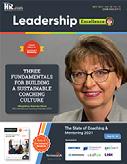 Julie Winkle Giulioni
Julie Winkle Giulioni
Author, Virtual /Live Keynote Presenter, Inc.’s Top 100 Leadership Speakers

I regularly read and contribute to Leadership Excellence and Talent Manage ment Excellence. I use many of the articles I read to augment my own presen tations and I often share the articles with my clients. They are always quick, right on target for the latest issues in my field, and appreciated by my clients.
If you want to stay up to date on the latest HR trends, choose a few of the different issues from the Excellence series of publications.
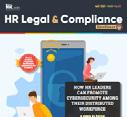


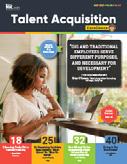



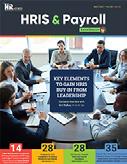

Dr. Beverly Kaye
CEO, BevKaye&Co.

We’re eager to hear your feedback on our magazines. Let us know your thoughts at ePubEditors@hr.com WHY EXCELLENCE PUBLICATIONS?
Can You Let Go?
By Ken Keis, Ph.D., Consulting Resource Group International, Inc.
Are you able to let go of toxic, negative attitudes, events, or situations? Many people refuse to let go—no matter what.
Here’s an example. There was a time when a CRG associate complained to a team member about an incident that had occurred between this associate and CRG—15 years prior! It was the first we had heard of the incident, and not one person who currently worked at CRG was with the company at the time of the occurrence.
Regardless, we wanted to address the issue, and so exchanged numerous emails and had many conversations back and forth, attempting to resolve matters. However, the associate would not let go of her toxic thought and stated that she never wanted to talk to CRG again! It was obvious that her negative attitude was dysfunctional and destructive. She refused to acknowledge that it was stemming from her inability to let go of an incident that had occurred 15 years beforehand—while it was clearly affecting her health, wellness, and emotional stability.
Medical research has proven that negative thoughts produce damaging chemicals that can harm the physical body. Negative thoughts can contribute to the following conditions:
● Compromised immune system
● Hypertension
● Stress
● Cardiovascular disease
● Insomnia
● Obesity
● Decreased cognitive functions
● Irritability
And that’s only the beginning!
So why would people want to hold on to this negative stuff? It could be that it’s the only way they know how to deal with it.
Negativity is an activity that gets others’ attention. We can see this behavior in poorly parented children, as young as age two. If acting up is the only way they can get attention, then that’s exactly what they will do. Adults act up, too!
For some individuals, drama and being negative is their “badge of honor”—their claim to fame, if you will. If you have contacts or friends like this, please limit your time with them; they are hostile and negatively affect everyone else around them.
Think about it. Do you know people with a chip on their shoulder? Do you like to be around them? Probably not, because they are toxic.
Some people have become so accustomed to being miserable and negative that they don’t understand any other way. In fact, their entire identity is defined by their high-maintenance, drama-driven, dysfunctional personality. These people are on the road to personal destruction. Get off their path as quickly as possible to avoid their caustic energy!
Personal Excellence presented by HR.com OCTOBER 2022 6 Submit Your Articles
Don’t let situations or people hook you or drag you down
COVER ARTICLE
Personal relationships are especially corrosive when individuals won’t let go of past hurts, but instead, continue to play reruns of previous offenses.

Unless we are willing and able to let go of our stuff, it will control our thoughts, direction, and outcomes. In all 12-step programs, the first step is letting go. The only one who suffers from not letting go is the person who continues to hang on.
Most of us have stuff we need to let go of. What stuff do you need to banish from your mind? It doesn’t matter how offensive it was; it is important to let it go. Why? Because it is damaging your body, mind, soul, and relationships!
At the end, who cares what others have said or done to you? Unless you allow the past to affect you, it cannot. The greatest leaders are individuals who can let go and then move on. That doesn’t mean we accept or condone these offenses or previous hurts and wrongs—it’s just that we refuse to allow the detrimental effects from our past to continue into our future.
It’s time to let go of toxic and negative attitudes for good! Move on. Don’t let situations or people hook you or drag you down.
I encourage you to consider the following Action Steps to help you let go of past hurts, while you begin to live your life On Purpose.
Action Steps:
● List any past incidents in your life that you are still hanging on to and have not let go of.
● Determine what effects clinging to negative attitudes is having on you regarding your overall wellness and quality of life.
● Remember that negative attitudes or thoughts can produce harmful toxins in the body, which can ultimately manifest in physical and mental health issues and conditions.
● Think of a caustic/toxic person in your life— someone who will not let go of the past; then consider the effect this individual has on you and others. Is he or she really the type of person you want in your life as a role model, or even as a friend or acquaintance?
● Take immediate action. Begin the process of letting go of the unnecessary stuff you are still carrying around. Follow the necessary steps in order to achieve freedom from these burdens.
What would it mean if, every day, you were positive and engaged? Letting go of the past and shifting your attitude toward the now and the future will give you the freedom and ability to fully enjoy your life. Don’t wait—do it now!
Ken Keis, Ph.D. is an expert on leadership, purpose, wellness, and the foremost global authority on personality and behavioral assessments, that increase and multiply your success rate. He is the President and CEO of Consulting Resource Group International, Inc. An internationally known author, speaker, and consultant, in the past 32 years, Ken has conducted more than 3000 presentations and 10,000 hours of consulting and coaching. Dr. Keis is the author of Why Aren’t You More Like Me?, Deliberate Leadership, and The Quest For Purpose!
Would you like to comment?

Personal Excellence presented by HR.com OCTOBER 2022 7 Submit Your Articles Can You Let Go?
Leaders: Stop Hiding Your Emotions
By Carolyn Stern, EI Experience
For most organizations, it is obvious which emotions are acceptable, appropriate, and tolerated. The unwritten and unspoken rules about which feelings are okay to demonstrate typically include happiness, passion, and enthusiasm, while emotions like sadness, fear, or frustration are frowned upon.
Most of us have been taught, at times, to essentially wear an emotional straitjacket at work. We tend to park our emotions outside of the office since we don’t feel it’s safe to admit we are humans who have feelings. So we put on corporate personas and masks and hide a huge part of who we are from others.
Hiding “Taboo” Emotions
Right now, within many corporations, workers who are subconsciously encouraged to keep taboo emotions under wraps are likely smiling at their desks, but crying in the bathroom, behind closed doors. This leads to overvaluing our positive emotions and undervaluing our negative ones. But we need to experience both positive and negative emotions in healthy, sustainable ways as they each provide valuable information about ourselves and teach us crucial life lessons.
When our feelings do get the best of us and take over, we have been conditioned to want to appear tough or unflappable; a “never let them see you sweat” kind of attitude takes hold of us. We habitually don’t want people to witness us as hurt, sad, or afraid. We fear
that if we are seen expressing those emotions, we will be perceived as weak.
Alternatively, if we appear too elated, excited, or enthusiastic, our colleagues might think we are trying too hard and working to outshine them. Others may see us as eager beavers. Even though we may just be determined go-getters, our over-exuberance could have diminishing returns or start to work against us in the workplace.
Emotions and Leadership
A large part of the reluctance for people to express these so-called banned emotions stems from leaders, who subscribe to the outdated universal notion that a leader must be stoic and unhindered. Essentially, this creates a workplace culture in which people are afraid to ask for help, cannot make decisions for fear of being wrong, and shove workplace conflicts under the rug to fester.
Many leaders do not know how to address feelings connected with work challenges and changes. They are too scared to deal with the emotions associated with them in the workplace. Yet not dealing with emotions—not condoning employees to be human at work—hurts us, our people, and our organizations. Worse, it holds us back from creating remarkable cultures and achieving incredible results. Unfortunately, the gaps in leadership that allow such longstanding attitudes to take hold are all too common.
Personal Excellence presented by HR.com OCTOBER 2022 8 Submit Your Articles
We are complicated, and it is time to stop pretending we’re not
TOP PICK
Why are we so afraid of emotions when we know how much not tending to them hurts and limits us, our teams, and our organizations? We are afraid of the consequences.
We are frightened that by sharing our feelings, we will be perceived as weak. We are nervous that if we share our emotions, they could be used against us. We fear conflict, rejection, and resentment. And what if tending to our emotions at work makes things even worse? What if our disclosure has a ripple effect and impacts our future? These fears, and others like them, stop us in our tracks and keep us silent.
Fearing The Consequences
We are afraid of the consequences because we do not know how to tend to our emotions in the workplace— or anywhere, frankly—in a manner that achieves the results we desire. For instance, we might be upset with a situation at work, but don’t have the tools to express our anger truthfully and constructively and fear that in expressing our emotions about the situation, we will act out in a way that can harm ourselves and alienate others. That aftermath is scary, so we don’t share or deal with emotions in the workplace because we do not have the tools (and the confidence to use them) to effect the change we want.

To no longer fear the consequences, we need to debunk the myth that emotions are bad and that expressing our feelings makes us weak. Emotions are real, and just like the classic Clint Eastwood spaghetti western, they can be good, bad, or ugly. Similar to the characters of that film, nobody is perfect. We are complicated, and it is time to stop pretending we’re not.
As leaders, we must adapt ourselves and our workplaces to better accept, nurture, and explore feelings. If we do not know the importance of connecting, empathizing, and relating at an emotional level with our people, or how to bring out the best in each of our workers, our organization will underperform and lose excellent employees and have workplace politics, disengagement, low productivity, and burnout. We must learn the emotional skills needed to survive and thrive in this human-filled corporate world.
Carolyn Stern is the author of The Emotionally Strong Leader and the President and CEO of EI Experience, an executive leadership development and emotional intelligence training firm. She is a certified Emotional Intelligence and Leadership Development Expert, professional speaker, and university professor, whose emotional intelligence courses and modules have been adopted by top universities in North America.
Would you like to comment?

Personal Excellence presented by HR.com OCTOBER 2022 9 Submit Your Articles
Leaders:
Stop Hiding Your Emotions






Empower HR Tech Europe brings together credible practitioners who are at the height of HR technology to an immersive event experience. Our six-track conference showcases what is possible, what is realistic and what the next steps are. HR Professionals will take away specific, measurable, actionable, realistic and timely tactics that tie into their business needs. With formats designed to foster an environment of inclusiveness and honest discussion, Empower HR Tech Europe will allow you to collaborate with your peers, industry experts and solution partners through every element: A NEW KIND OF HR INDUSTRY EVENT FOR THE U.K. AND EUROPE Keynotes Concurrent Conference Sessions Workshops Panel Discussions Demonstrations Round-Table Brainstorming Expo Tours Video Montages Fringe Networking 1:1s with Peers, Partners, Influencers & Analysts Fun and MORE! · · · · · · · · · · · SAVE UP TO £440 Early Bird Ends 18 Nov 2022! REGISTER NOW hr.com/empowerhreurope-attend Bring your team! Group pricing is available. Contact CorporateEducation@hr.com for more information. CHART YOUR PATH IN OUR UNCERTAIN WORLD OF WORK 25-26 January 2023 ExCeL Venue, London
Fostering Psychological Safety Amidst IndustryWide Layoffs
First-time founder navigates recession and builds transparent culture
By Ahva Sadeghi, Symba
Speaking of fear, the news today is pretty scary for anyone who works at a tech startup, especially the founder. Headlines read, “Valuations are slashed in half!” and, “Tech Company X laid off 23% of its workforce.”
As a seed stage founder, I’ve been granted a once-in-a-lifetime opportunity to build an idea from scratch and hire a team to make it happen. However, I must say that it is not all rainbows and butterflies. The entrepreneur life may seem glamorous in magazines and online but throughout this journey of building enterprise technology, my co-founder and I have faced many different obstacles as women of color. Nevertheless, one of the most meaningful aspects of creating a company is the ability to build a diverse team and cultivate an inclusive culture.
As the founder of a company on a mission to “open up the workforce,” I surely can’t drop the ball on that. I have a commitment to our investors, customers, team, and our community of believers.
During this critical time of the market recession, I have had to take on a great challenge that I had not faced before. In the wake of all these tech layoffs, it was my duty to work to ensure job security and psychological safety for our startup team. However, as the founder, I have learned that it is difficult to gather candid and transparent feedback from everyone (especially in remote settings). I needed to know how the team was feeling and work to create confidence and assurance.
So, I created an anonymous survey for our team to share their true concerns and rank their level of confidence in the company and our long-term success. Creating
the survey was the easy part, reading the results with an open mind took a lot of courage. At first, I was nervous when I opened up the survey, but I knew that moving forward and strengthening our team and culture meant hearing hard things and proactively improving them. You can’t grow unless you do this!
The survey results taught me that our team wants more transparency and would love to hear more about our investor relations. It gave me clear insights and helped me take actionable steps. Therefore, I organized a follow-up all-hands a few weeks after and put a strategy in place to commit to addressing the team’s needs and feedback. I wanted to demonstrate that I am wholeheartedly committed to our team and everyone’s success, and I immediately set things into motion.
Personal Excellence presented by HR.com OCTOBER 2022 11 Submit Your Articles
After the meeting, I launched another anonymous survey to see if we had made strides. I was thrilled to see the results and understand that people felt heard. It led to over a 30% increase in our team’s confidence in our

company’s success. I understood that facing my fears about hearing hard truths during uncertain times is the first step in the process. As a leader, one of my mottos is, “I’m not here to be right, I’m here to get it right.” Symba and our team humble me each day
because I do make mistakes and I’m not perfect, but I strive to carry this humility with me and grow throughout this process of building a team and culture. It is the most rewarding gift and meaningful endeavor I have ever pursued.
Ahva Sadeghi is a passionate social entrepreneur and co-founder of Symba, an award-winning, venturebacked, and women-founded internship platform that combines program management and data analytics tools to facilitate equitable access to jobs and wealth creation. Ahva is an economist and researcher focused on remote work and workforce development. Prior to launching Symba, Ahva worked at the US Department of State in the Human Rights Bureau and completed a civil rights fellowship with Congressman John Lewis in Atlanta. She was recently named Forbes 30 Under 30 and a Global Entrepreneur Scholar by the US Department of State.

Personal Excellence presented by HR.com OCTOBER 2022 12 Submit Your Articles Fostering Psychological Safety Amidst Industry-Wide Layoffs
Would you like to comment?
We Are Forever Confronted With Time Thieves
Set your goals, control your activities, and time will reward you
By Jim Stovall, Narrative Television Network
Throughout my 40-year business career, there has been a proliferation of books, videos, and training courses on the subject of time management. Any number of experts will take your attention, effort, and money to fulfill the mission of helping you to manage your time. Managing time is as absurd a concept as
managing the weather. You can’t control the weather. At best, you can prepare by equipping yourself with an umbrella, a warm coat, or rain gear. Whether you prepare or not, the weather will do what it’s going to do, and whether or not you and I are organized or productive, there will always be 60 minutes in an hour, 24 hours in a day, and seven days each week.

Personal Excellence presented by HR.com OCTOBER 2022 13 Submit Your Articles
TOP PICK
Once we understand that we can’t control time, we face the ongoing challenge of controlling ourselves. Controlling how we utilize time is difficult because we are forever confronted with time thieves. These are the people, activities, and distractions that gobble up our minutes, hours, and days.
It’s important to realize that you cannot judge what is the appropriate utilization of your time unless you have a specific objective and a definite goal. A goal is a dream with a time limit and an action plan. Without a deadline and a plan to reach your objective, you don’t have a goal; you simply have a wish. Once you’ve established a firm goal, you can then begin to control yourself and your efforts within the context of your daily schedule. Even after you’ve established a firm goal and an action plan of how to achieve it, the time thieves will not leave you alone. In fact, they may increase their efforts to distract you.
One of the biggest time thieves for entrepreneurs is government paperwork and reporting. This thief is not optional and cannot be avoided, so it should be reduced to a bare minimum and delegated to the greatest extent possible. Without getting partisan or political, I tend to support candidates and initiatives that reduce these burdens on entrepreneurs. Since
small businesses create the majority of new jobs and opportunities, government roadblocks impact us all.
There are salespeople, survey takers, casual acquaintances, and other people who will call you, send you an email, or drop in while you’re trying to focus on your goals and objectives for the day. You can’t control yourself unless you control these potential time thieves.
As you go through your day today, set your goals, control your activities, and time will reward you.
Today’s the day!
Jim Stovall is the President of the Emmy-award-winning Narrative Television Network as well as a published author of more than 50 books—eight of which have been turned into movies. He is also a highly sought-after platform speaker.
Would you like to comment?

Personal Excellence presented by HR.com OCTOBER 2022 14 Submit Your Articles We Are Forever Confronted With Time Thieves
Quiet Quitting: A Wake-Up Call For Better Management
How to recognize and combat quiet quitting
By Sathya Smith, Piper


Popularised by TikTok, the phenomenon of quiet quitting has now found a prominent spot in the media, with an increasing number of outlets discussing the issue and citing it as a precursor to the great resignation.



Quiet quitting describes an employee’s decision to perform the absolute minimum amount of work required to fulfill their duties.




Although associated with Gen-Z’s culture, quiet quitting is a new buzzword that describes an issue with long-standing roots in our society. Quiet quitting can be common when employees are faced with unrealistic demands and workloads, as well as being symptomatic of bad management – of which lack of communication and recognition are chief causes.




The quiet quitting phenomenon is another sign that good management and providing
leaders with the right tools to navigate these new challenges can make the difference between a successful organization, and a failing one. Not combatting it can have devastating consequences for businesses, and fighting it requires proper evaluation of the factors that influence employees to take this path.
Workloads and Expectations




When the demands on employees are unrealistic, the quality of work will go down. Frustration and fear will change a motivated person into a demotivated one. Managers should monitor workloads regularly and check in with teams to ensure workloads are not causing burnout.

Personal Excellence presented by HR.com OCTOBER 2022 15 Submit Your Articles
Salary
Focusing on work and delivering outstanding results can be hard to prioritize when struggling to pay bills. Whilst the comfort of financial security is a powerful source of commitment and dedication in people’s relationships with their jobs, the cost-of-living crisis and soaring energy costs could be pushing workers to their limits. If teams feel that they’re not being paid their worth, quiet quitting can take place quickly.
It’s crucial for organizations to monitor salaries in their sector and ensure they remain competitive. Obviously, companies can only pay more if they’re making enough profit, but if the rewards are lower than their competitors, they need to consider how else they can keep their staff.
Career Progress
Quiet quitting can often be a response to a lack of career prospects and growth. Managers must remember that employees are inspired by the opportunity to advance in their careers. A fulfilling work environment allows employees to work towards their individual goals knowing there is a path to advancement. This type of drive will also bolster productivity and engagement.
Wellness and Mental Health Support
Hybrid and remote working comes with significant advantages; from
more work flexibility to reduced costs of commuting, however, these models certainly have their fair share of shortcomings too.
In today’s job market, the digitalization of workspaces and the use of platforms including Teams, Slack, and Trello have created an “always on” expectation, while also increasing physical distances between teams and their leaders. This new way of working can have a serious impact on the mental health of your workforce.
Leaders should provide adequate well-being support to ensure stronger relationships and to protect individuals who may feel isolated.
Providing a good holiday allowance (and ensuring employees take the time to shut off), a fair sickness policy, and extra flexibility when needed can really help. Having an open and safe channel for communication and activities centered around personal care and wellness are also essential.
Honest Communication
Regular check-ins via one-to-one meetings can greatly impact an employee’s state of mind and increase the bond between managers and staff. Creating regular moments of honest communication allows leaders to prompt solutions, but also to manage expectations, e.g., if an employee is unhappy about her current salary but a raise is not

economically possible at that time, then honest communication allows leaders to explain the reasons and set out a plan that’s satisfactory for both parties.
When feedback to management is difficult or impossible, aspects of quiet quitting can soon develop. Conversely, if teams feel safe and respected when giving feedback, motivation and engagement will increase. It’s a win-win.
Sathya Smith is the Founder and CEO of Piper. Sathya has 15 years of management and leadership experience and previously worked as Head of Partner Technology at Google for 12 years. An engineer by training, Sathya started her career at Ericsson as a Software Engineer. She went on to work as Chief Technology Officer at one fine stay (acquired by Accor) and a Venture Partner at London-based venture capital firm Local globe. In her free time, Sathya enjoys angel investing in women-led companies and mentoring women in STEM.
Would you like to comment?
Personal Excellence presented by HR.com OCTOBER 2022 16 Submit Your Articles Quiet Quitting: A Wake-Up Call For Better Management
How Emotionally Intelligent Is Your Team?
6 tips to responding to a heated argument
By Anja van Beek, Anja van Beek Consulting & Coaching
As we enter year three of the pandemic and confront global difficulties that force us to live in a state of uncertainty, empathy in the workplace is now taking on a new level of significance and necessity.
For team members to excel, be challenged, and feel like they have a purpose in their job, leaders must foster an environment and culture that allows them to bring their best selves to the table. Leaders must constantly remember that the way they lead, and the things they do and say affect how others feel on the inside.
EQ (Emotional Intelligence) Becomes Crucial
● What do you say when a co-worker has missed a deadline three times in a row in the past week?
● What should you do if the team feels unmotivated because you decided to go back to the office full-time?
● Or when they are waiting for someone else to act rather than taking responsibility for improving a client’s situation.
● On the other hand, do you acknowledge the team’s modest gains and not just focus on the big stuff?
One of my favorite quotes is Viktor Frankl’s words “Between stimulus and response there is a space. In that space is our power to choose our response. In our response lies our growth and our freedom.” This is sometimes easier said than done.
Here are 6 tips when reacting to a heated argument
Reframe Your Thinking
We often jump to a conclusion and easily take things personally. Reframe your thinking by considering what other possible reasons may be for the person to act the way they are behaving. A level of self-awareness is also hugely beneficial. For example: ‘What is my role in this scenario?
How has my behavior impacted the other person’s view – without being aware of it?’
Take a Pause
Never underestimate the impact of taking a few deep breaths to slow down your heartbeat and be able to evaluate what is happening and what will be the best way to respond to this situation.
Remain Curious
Ask questions to truly understand the other person’s perspective. Help me understand why do you want to achieve XYZ. What is the real issue for you? If you choose X what are you saying no to?
Be Aware of the 4 F’s
When you are triggered, you are in a fight, flight, freeze or fawn state. A chemical reaction results in our neocortex (thriving, prob lem-solving part of the brain) not functioning optimally. Instead of allowing an unconscious habit to drive your reaction, reactivate the neocortex and be mindful in choosing how you want to respond.
Personal Excellence presented by HR.com OCTOBER 2022 17 Submit Your Articles
TOP PICK
To reactivate your neocortex, ask yourself questions such as: What is the real issue for me? What might support a different explanation? What if this was someone else behaving in this way? What is my behavior communicating? to notice what is really going on in the moment?

Name the Emotion
It is helpful to be able to name the emotion you are experiencing
and consider what is the emotion trying to tell you. Instead of being angry, perhaps you are disappointed with how your idea wasn’t taken, despite you being verbally told that your idea was the best idea.
Tactfully Share What You Are Experiencing
Remember, an experience is made up of four elements – what am I observing, thinking, feeling and wanting. When sharing your

experience, a good start is to start with the “I”. For example, when the project’s team leader did not schedule sufficient time on the agenda: “I noticed that this is the third time that we didn’t have sufficient time allocated to the brainstorming topic. I feel disappointed that my idea wasn’t heard after the request to make the research a priority. How can we ensure we have sufficient time allocated to this agenda point moving forward?”
As an international, highly sought-after coach, speaker, trainer and published avuthor, Anja has more than 20 years of experience enhancing the performance of individual executives, teams, and organizations. She is an Agile Talent Strategist, Leadership & HR Expert, and Executive Coach. Anja was one of the first to be authorized as an Agile People professional and facilitator. She partners with leaders and HR teams on all people-related aspects with a specific focus on integrating agile principles and practices. She is a leadership coach and an expert in supporting teams to remain relevant and thrive in the future of work.
Would you like to comment?
Personal Excellence presented by HR.com OCTOBER 2022 18 Submit Your Articles
How Emotionally Intelligent Is Your Team?
The Purpose Of Purpose
By Tim Connor, Connor Resource Group
You
would be amazed at how many people live each day without any sense of purpose or meaning – they just go from day to day, same stuff different day –same routines, same outcomes and same activities. Don’t get me wrong there is nothing wrong with routine, but the question is – are your routines leading you to greater happiness, success, contentment and results?
If they are – go for it – keep at them, but if they are notconsider that maybe your major challenge is finding and living with a greater purpose, one greater than yourself!
Purpose - the reason for which something exists or for which it has been done or made, the goal or intended outcome of something.
In one of the greatest self-help books of all time, Think and Grow Rich, Hill discusses the idea of – definite major purpose. I have to tell you that after reading that book multiple times I finally got it – what is my purpose in life? I won’t bore you with my answer – just that this purpose that I
developed over forty years ago still drives my attitudes, actions, decisions, and behavior – and with God’s help, it always will.
Without purpose – and it can be anything – we are doomed to live a life of emptiness, confusion, disappointment, regret, aimlessness and stress.
What is purpose? In a nutshell, it is a philosophy that determines or is the benchmark for all of your actions and decisions. This doesn’t mean you will always make the right or the best decisions or always take the right actions, but when you don’t, you will be more aware of the incon sistencies that are the outcome as a result.
Purpose is like a roadmap (I know I should say Google here). You know the destination and the map gives you the possible routes and you decide which ones to take given your time, resources and desires. You have a choice - you can take the fastest route, the best route or the route that gives you time to just take in the scenery and enjoy the journey –but this choice is yours in the end.
Purpose is what grounds you and keeps you focused. It guides you through obstacles, failure, uncertainty and challenges. It becomes your best friend as you listen to its guidance. It tells you what to do and what to avoid, but again – you can listen and heed its messages or go your “own way” driven by fear, ego, the need for approval, or arrogance.
But, in the end, a life without purpose is just that – a life without direction, specific goals, and confidence and one that leads you to unknown places, ones you often wish you didn’t find yourself in.
How do you develop (discover) your purpose? How do you live each day (moment) with purpose? How do you carry on with purpose when you are daily bombarded with problems, unknowns, and uncertainty? One thing I have learned is that without a sense of purpose dealing with these outside-in issues will always be more difficult and will lead to more of the same or even the increase of pressure from the same ones over time.
Personal Excellence presented by HR.com OCTOBER 2022 19 Submit Your Articles
Are your routines leading you to greater happiness, success, contentment and results?
How do you develop (discover) your purpose?
A lifelong purpose should not be chosen quickly or with little or casual self-evaluation. It should be developed after careful analysis of your dreams, desires and what you want your life to stand for. It should not be ruled by your current condition, roles, resources, circumstances, talent, experience or the desires or demands of others.
Purpose is not a goal but the underlying foundation for the goals that you set and work towards. Purpose is developed from deep inside your spirit and soul keeping in mind the journey ahead regardless of your current age or circumstances.
It is impossible to know what the future holds regardless of how well-defined your purpose is. Life is filled with constant uncertainty and obstacles. The purpose of purpose is to help you navigate through these with passion, courage, faith, and confidence. And these take time to cultivate and demonstrate.
You find your purpose by listening, observing, attention and awareness. And when it comes to you – you will know it – believe me – it will speak to you.
How do you live each day (each moment) with purpose?
First, you have to sink this purpose deep in your mind so that it keeps reminding you each moment as
life keeps asking you – are you living with this purpose now?
Next, you have to find the courage to honor this purpose regardless of your circumstances and the rejection, advice, criticism or suggestions of others.
If you can accomplish these two, the next one is to use your purpose as a template against all of your decisions and actions –am I living this purpose or is it just a phrase?

You don’t change it as the years pass regardless of your failures or successes.
None of these are easy tasks but in the end, you will arrive at your desired destination with – inner peace, gratitude, contentment and calm.
Personal Excellence presented by HR.com OCTOBER 2022 20 Submit Your Articles The Purpose Of Purpose
How do you carry on with purpose when you are daily bombarded with problems, unknowns and uncertainty?
Life is uncertain. We all will face trials and tribulations. These are not meant to break us but strengthen us – the question is –what do we do with them? Going through difficult times without purpose is like trying to travel to a
destination not knowing what or where the destination is.
A vital activity necessary while following (living) your purpose is to surround yourself with people who believe in you, support you, and want you to achieve your goals and dreams. It is also necessary you keep filling your mind with validating information that supports your journey. This
means, developing a life filled with learning, growing, and discovering.
My life purpose (if you are interested) – To learn everything God wants me to learn and to share that learning with everyone who crosses my path.

“The purpose of life is a life of purpose.” - Robert Byrne
Tim Connor is the President of Connor Resource Group. He has been a full-time professional speaker, trainer, coach, consultant and best-selling author for over 35 years. During his career, he has given over 4000 presentations in twenty-nine countries around the world to a wide variety of audiences including over 2000 state and national associations and non-profits.
Would you like to comment?

Personal Excellence presented by HR.com OCTOBER 2022 21 Submit Your Articles
The Purpose Of Purpose
HRCI® & SHRM® CERTIFICATION PREP COURSES
GROUP RATES AVAILABLE
For HR Professionals
Show that management values the importance of the HR function, and has a commitment to development and improvement of HR staff.
Ensure that each person in your HR department has a standard and consistent understanding of policies, procedures, and regulations.
Place your HR team in a certification program as a rewarding team building achievement.
For Your Organization
Certified HR professionals help companies avoid risk by understanding compliance, laws, and regulations to properly manage your workforce.
HR Professionals lead employee engagement and development programs saving the company money through lower turnover and greater productivity and engagement.
A skilled HR professional can track important KPIs for the organization to make a major impact on strategic decisions and objectives, including: succession planning, staffing, and forecasting.
HR.com/prepcourse CALL TODAY TO FIND OUT MORE 1.877.472.6648 ext. 3 | sales@hr.com
Why Certification is the Best Choice:
Less expensive than a masters or PhD program, and very manageable to prepare with flexible study options.
Recertification - ensures HR professionals continue to be up to speed on the latest legislation and best practices
Recognized, Industry benchmark, held by 500,000+ HR Professionals
We offer group rates for teams of 5+ or more for our regularly scheduled PHR/SPHR/ SHRM or aPHR courses.
For groups of 12+, we can design a more customized experience that meets your organization’s needs. You can have scheduling flexibility in terms of the days, times, and overall length of the course.
Groups rates for HRCI exams are also available as an add-on.
All group purchases come with 1 year of HR Prime membership for each attendee to gain the tools and updates needed to stay informed and compliant.

1
2.
3.
CALL TODAY TO FIND OUT MORE 1.877.472.6648 ext. 3 | sales@hr.com | HR.com/prepcourse Group Rate Options 1 2 3
The Future Of Work Requires Compromise
It’s time to meet in the middle
By Pam Nemec, Pam Nemec Consulting, Inc.
In 2009, after being married for 17 years, I suddenly became a single mom of two. My kids were 10 and 14 when our world turned upside down.
I had just been promoted to senior director and was busy managing a corporate and family relocation to a new city. The timing couldn’t have been worse, but I’m not sure there’s ever a good time to deal with something so devastating.
Instead of attempting to hide my personal situation, I decided to confide in my boss and make him aware of the challenges I was facing in my life. I had always put my kids first, but based on what we were going through, they would become an even bigger priority. I was also acutely aware that I would now be the main financial provider for my household. This weighed heavy on my mind and heart. My boss, sensing my concerns, offered me reassurance and support.
I ended up being a single mom for the next 12 years and my boss’ support never wavered. When I left the company, I was a senior vice president and I was the mom of two happy, healthy, successful adults.
I’m a big proponent of setting healthy boundaries at work. I know how much our kids need us, and we need them, in our daily lives. However, I’m also a proponent of excelling at work and I don’t believe you must sacrifice one to have the other.
I’ve been following this new trend of “quiet quitting” or “anti-hustle culture,” where employees conduct the equivalent of a silent protest. They work only the hours they’re paid to work…nothing more. Without warning, they stop answering after-hour emails, texts and phone calls. They no longer bring new ideas for consideration. Basically, they do enough to keep their job. I get it and I completely understand the desire to keep your livelihood separate from your life. However, I feel compelled to caution employees about jumping on this bandwagon.
Don’t get me wrong, I’m an advocate for companies creating a culture where employees can thrive both at work and at home. I also don’t think leaders should expect employees to be on constant call. However, there are times when it can’t be avoided. So instead of quiet quitting, have a conversation with your boss and establish boundaries that feel respectful to both sides. Quiet quitting is not the way to get employers to listen. In fact, it’s highly likely it will backfire. The reality is, leaders have businesses to run and goals to achieve, and we must help them achieve them so we can all stay employed. It should not come at the cost of employee quality of life, however.
Considering this, some of these “quiet quitters” may find themselves out of a job. Right now, that may not seem like a big deal because there are so many jobs available, but circumstances can change quickly, so think twice before taking your role for granted.
Personal Excellence presented by HR.com OCTOBER 2022 24 Submit Your Articles
TOP PICK
So, instead of “quiet quitting” let me suggest a different approach.
● If we want to truly redefine the future of work, let’s have a conversation and meet in the middle. With all levels and perspectives represented and with open minds, let’s start to truly understand the daily pressure that leaders face at work and home, while also understanding the pressure employees face at work and home.
● Once we have empathy for each other’s challenges, it’s hard to be enemies. From there, you can begin offering ideas and thoughtful solutions to what the future of work looks like and how to make it a reality. For example, how can we ensure we stay connected and promote the company’s culture when most of the workforce wants to work from home? Company culture can be a huge point of difference but should never be left to chance.
● After you’ve narrowed down the ideas to the best one or two, create an action plan and begin constructing the processes and systems that will help get you there. Wishing, wanting, complaining, and “quiet quitting” won’t change the future of work. Good communication, compromise, and a solid action plan will.

We’re in this mess together. So, let’s cut each other some slack. Let’s try to understand the other person’s point of view and begin building work cultures we can all feel good about and support.
Pam Nemec is a Brand Culture Coach & Keynote Speaker. She helps executive leaders, managers, and teams create a world-class work culture based on an innovative 7-step brand model.
Would you like to comment?

Personal Excellence presented by HR.com OCTOBER 2022 25 Submit Your Articles The Future Of Work Requires Compromise
How to Create A Psychological Safety Zone
Engagement = psychological safety + trust
By Lauren E Miller, Grab and Go Stress Solutions, LLC
Amy Edmondson, Professor of Leadership at Harvard Business School, coined the term psychological safety as the ability to share your opinion, viewpoint, feedback, differences, and failures without the fear of judgment, shaming or ridicule from those around you. In her research, she found that organizations that create this safe space for open dialogue will oftentimes flush out human error and therefore be able to course-correct it quicker than organizations that do not practice psychological safety. People will not authentically share their mistakes when they fear that being honest will lead to punishment, humiliation, or ridicule.
So what creates a sense of safety and connection which moves us to feel secure sharing our ideas, questions, concerns and mistakes? It’s an inside job as we can not give out to the
world around us what we are not practicing within our own life. Trust and safety walk hand in hand. Trust is a process that can lead to psychological safety. Brene Brown offers a powerful definition of trust: choosing to make something important to you vulnerable to the actions of others. Simply put: I can trust you when what is important to me is safe with you. According to Brown, distrust occurs in relationships, when what I’ve shared with you that’s important to me is not safe with you.
How does trust tie in with psychological safety? When I determine that what is important to me is not safe with you, then I will not speak up and share my opinion, viewpoint, feedback, differences, and failures with you. Consider the negative impact of that scenario. What is the ramification to a team, direct reports and colleagues when I don’t speak up?
If your people do not feel safe to speak up, then relationships, team cohesiveness, innovation and productivity will ultimately suffer. A number one reason why people leave their current position is because they feel a lack of belonging. According to Diversity and Inclusion at Cornell University: creating genuine feelings of belonging for all is a critical factor in improving engagement and performance.
As you intentionally participate in creating a genuine concern for the people around you, respecting that not everyone thinks the way you think, you up the ante that you will expand the trust factor on your team which will lead to psychological safety and engagement. Edmondson suggests 3 goals when it comes to being a psychological safety advocate:
Personal Excellence presented by HR.com OCTOBER 2022 26 Submit Your Articles
● Framework projects by inviting everyone’s voice in the game.
● Acknowledge your own infallibility: I may miss something. Care about people.
● Remain curious: ask questions that create the necessity for voice.
As mentioned earlier in the article, you cannot give out what you are not personally practicing in your own life. There are four wellness and personal excellence areas that support a healthy ability to maintain psychological safety personally and professionally:
● Stress Management: Practice taking back the power you give to external circumstances to define what you believe you can handle successfully.
● Boundaries: The limits you create in your life (mental, emotional and physical) to protect yourself from overcommitting and burnout.
● Balance: The ability to expend your energy without
creating safe space as you invite people to freely engage with each other and step out of the fear zone. People engage when they know that you care about them and their goals.
depleting the source of you. Create healthy ground rules that give you the opportunity to align your behavior with what you value most. You can respectfully say no and delegate.
● Communication: Know what you want for yourself, the other person and the relationship before you open your mouth. Watch out for strong emotions that hijack you out of what you really want.
What do you want to do more of and less of in order to build a foundation for personal excellence and wellness in your daily life? As you commit to those behaviors that support the best version of yourself, you are better equipped to participate in creating a zone of psychological safety for the people around you.
Are you in a position to influence another person? Then you are in a position of leadership. Lead well and know that what you do and say has an impact on the people around you. Be intentional about
As you invite participation and create ground rules that are rooted in psychological safety, the trust factor with increase along with personal engagement: Engagement = Psychological Safety + Trust. Leaders who positively impact the lives of the people around them have an amazing ability to create a safe space in dialogue as they maintain a nonjudgmental attitude built on humility and curiosity.
Lauren E Miller, M.Ed., ICF-PCC, CSC
has a Masters in Adult Education with a Certification in Human Resources Development. She has personally conquered two of life’s top stressors at the same time, advanced cancer and divorce. Now Google’s #1 Stress Relief Expert, Award-Winning Author, HRD Trainer, and Certified Sherpa Executive Coach, Lauren provides process-driven programs and custom training with structure, guidance, support, and accountability designed to create positive change in behavior resulting in a positive impact on business (IOB) and life purpose.
Would you like to comment?

Personal Excellence presented by HR.com OCTOBER 2022 27 Submit Your Articles How to Create A Psychological Safety Zone
How Leaders Can Face Their Fears To Drive Organizational Success
By Dr. Jonathan H. Westover, Woodbury School of Business, UVU
We all experience inflection points in our lives, where we encounter uncertainty, challenges, and our greatest fears and must choose the path we will take: retreat to safety or face our fears head-on and let the consequences follow. And while we will likely face these inflection points in all aspects of our life, often some of the most challenging defining moments we encounter come when we are in various positions of leadership. How can we develop the resilience necessary to overcome the fear and anxiety that we will inevitably face in our various leadership roles?
1. Lean into the Nuance, Messiness and Complexity
To say the modern workplace is complex is a dramatic understatement. Leading a healthy, sustainable, people-centric organization that is continuously competitive in the marketplace requires some serious multivariable calculus. This complexity, inherent messiness and endless nuance are often fear- and anxiety-inducing and can be exhausting. But the current business climate doesn’t need to drive our fears, rather it can feed our creativity!
Today’s leaders, and those who will be leading organizations in the future, need to develop the ability to lean into the messiness. As the authors of a Harvard Business Review article, The Best Leaders Are Humble Leaders, write, “Ambiguity and uncertainty are par for the course in today’s business environment. So why not embrace them? When leaders humbly admit that they don’t have all the answers, they create space for others to step forward and offer solutions.”
Openly acknowledge the challenges you are facing and the corresponding complexities. Lean on the expertise of your people to drive new innovative solutions and you can turn the fear and anxiety-in ducing circumstances into successes for you and your team.
2. Avoid Dogma, Rigidity and Certainty
One of my favorite religious books is Peter Enn’s The Sin of Certainty. He addresses the dangers of dogma, rigidity and certainty within a religious context and argues for greater flexibility and humility within one’s religious beliefs and behaviors, but his message can also be applied in a broader leadership context.
Personal Excellence presented by HR.com OCTOBER 2022 28 Submit Your Articles
We can’t allow fears of the unknown to drive us or our teams
The reality is we face a range of dogmas within the workplace — everything from rigidity around organizational norms, policies, practices and procedures to broader societal dogmas (political, religious, economic, etc.). Fearful of the complexities and shifting ground around them, leaders are often tempted to exude faux confidence and certainty in relation to the organizational context and challenges facing them and their people. But this doesn’t actually serve anyone. Fear-based rigidity leads to an inability to iterate, adapt and pivot relative to shifting internal and external conditions.
Remember that, it’s okay to not know the right path forward. Work with your team in creating a vision and strategy that can help guide your activities and provide the scaffolding for success, while also providing the flexibility to adjust as needed.
3. Sidestep Imposter Syndrome
One of the fears many leaders face is imposter syndrome. Chances are, at one point or another, you have experienced this yourself — feeling like you don’t measure up, like everyone else around you is smarter, more experienced and capable, or you feel out of place, like who are you to lead this team? These thoughts are particularly common when new managers take on their first significant leadership role.
As a Forbes article puts it: “Leaders managing high-talented teams are likely to encounter impostor syndrome, but by encouraging questions, utilizing vulnerability and prioritizing problem-solving, they can ensure team morale remains strong — and help their employees feel the success they deserve.”

A healthy level of humility and self-awareness is essential. In fact, as a leader, you shouldn’t be an expert on everything, the most experienced, etc. You should be surrounding yourself with an amazing team and leaning on their expertise. However, if your imposter syndrome becomes debilitating, seek help and outside support.
4. Foster Intellectual Humility
As noted above, we need to foster greater levels of intellectual humility in our leadership style and approach. We can’t possibly be the expert on everything our team does. The weakest and most ineffectual leaders are often those who try to control the information and who assume they know best. The best leaders recognize the experience and expertise of their individual team members and empower everyone to leverage their disciplinary and functional knowledge for the benefit of the entire team.
Personal Excellence presented by HR.com OCTOBER 2022 29 Submit Your Articles
How
Leaders Can Face Their Fears To Drive Organizational Success
One way to foster greater intellectual humility as a leader and among your team is to show vulnerability. The HBR article I mentioned previously argues that we should think of our mistakes as teachable moments. “When leaders showcase their own personal growth, they legitimize the growth and learning of others,” the authors write, “by admitting to their own imperfections, they make it okay for others to be fallible, too.”
You don’t have to have it all figured out; no one on your team expects that. What they do expect is that you openly acknowledge your limitations and shortcomings, apologize when mistakes were made and continuously try to learn and grow, as well as encourage and support the continuous growth and development of your team.
In closing, the modern leader faces a wide array of complex challenges. While it can be tempting to try and reduce the organizational and work messiness and complexities into something more easily definable and actionable, we can’t allow fears of the unknown to drive us or our teams. In following the

advice above, we can transform into a truly confident and emotionally secure leader, ready to face our fears and anxieties head-on and tackle whatever is thrown our way!
Jonathan H. Westover, Ph.D., MPA, SFHEA, AFCIPD is Chair and Associate Professor of Organizational Leadership in the Woodbury School of Business (UVU), Academic Director of the UVU Center for Social Impact and the UVU SIMLab, and Faculty Fellow for Ethics in Public Life (previously the Associate Director) in the Center for the Study of Ethics. He is also an experienced OD/ HR/Leadership consultant (Human Capital Innovations, LLC), with experience transforming organizations across the globe.
Would you like to comment?

Personal Excellence presented by HR.com OCTOBER 2022 30 Submit Your Articles
How
Leaders Can Face Their
Fears
To Drive Organizational Success
Best-in-Class Education For All Your Learning And Training Needs
HR.com prepares HR leaders to be strategic business leaders by curating and delivering best-in-class products and services so you don’t have to waste time seeking out content on your own. We leverage technology and experience to provide you with customized solutions to best meet your professional development needs at every stage of your career.
From on-demand to cohort-based offerings, below is a listing of virtual courses that will challenge and empower you by giving you the tools to drive innovation and success in your organization.
Why Aren’t You More Like Me?
Radically Improve Your Self-Confidence and Transform Into Your Best Self. This course is designed to help develop self-awareness, improve self-management, and increase emotional intelligence to achieve self-mastery.
Habit Finder Shift
Create the Life you want Personally and Professionally. Learn how to determine and assess your habits to shift from what you are thinking to HOW you are thinking so you can optimize fulfillment in your relationship with yourself and with others.
What Do You Really Value?
Learn What Motivates Yourself and Others. Transform into your Best Self! This virtual course helps individuals develop their self-awareness, improve their communication, self-management, and emotional intelligence so they can achieve self-mastery.
Shift Corporate Coach Program™
Learn practical coaching skills and tools you can put to work in your organization right away with the first part of the Shift Corporate Coach Program™ on HR.com! This 2-part program provides business leaders with the right coaching toolset for ultimate coaching success through an independent online learning program and live virtual coaching clinics and circles.
Higher Ground Leadership Certificate of Learning
Learners will understand the difference between motivation and inspiration and how inspiration—not motivation—is the heart of great leadership. Inspiration in the workplace is about destiny, mastery, purpose, and love. Learners will master how to ignite the Spark of inspiration within, inspiring yourself first, so that you grow your Flame, using the CASTLE® Principles that inspire others, carrying your Torch to inspire the world.
Meeting Effectiveness
Become a Meeting Rock Star! Learn how to develop strategies to apply situational leadership to help move the team forward and run highly productive live or virtual meetings.
Certificate in Leadership
What is leadership and why is it important? How does a leader encourage change without triggering fearful resistance? What are the key elements of leading an effective team? What is the role of charisma in leadership? How can a leader achieve work-life balance? This suite of courses addresses all of these questions and many more.
Gain access to more expert-led leadership courses.
At HR.com, we are committed to educating and inspiring HR professionals and helping them build meaningful and impactful careers. With products and resources rooted in education, research, and leveraging cutting-edge technology, we help at every career stage - and over 1.92 million HR pros agree! (How could that many people be wrong?) By delivering best-in-class learning products, 250+ annual webcasts and 30+ world-class events, and innovative and thought-provoking research through the HR Research Institute, HR.com strives to inspire and strengthen workforces to change the world. HR.com also offers the most comprehensive HR certification exam preparation and guarantees a passing score on all SHRM and HRCI certification exams. Technology and experience drive our customized solutions that will help you become the best and most successful version of yourself.
Personal Excellence presented by HR.com OCTOBER 2022 31
13 Targeted Publications to Reach Your Audience


Informing, Educating, Enlightening and Assisting HR professionals in their personal and professional development, the Excellence series offers high-quality content through the publications!



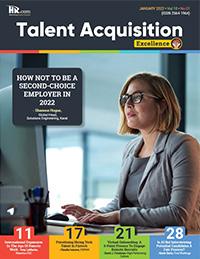

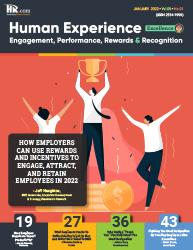
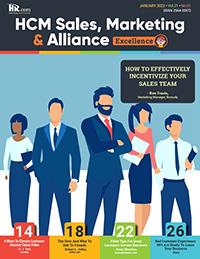


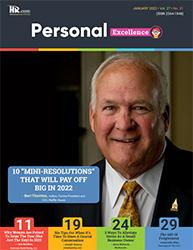
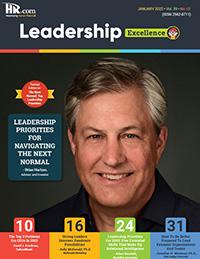
Like to submit an article? Use our online submission form or for more information go to www.hr.com/ExcellencePublications Publications

 Keis,
Keis,













 Julie Winkle Giulioni
Julie Winkle Giulioni




















































